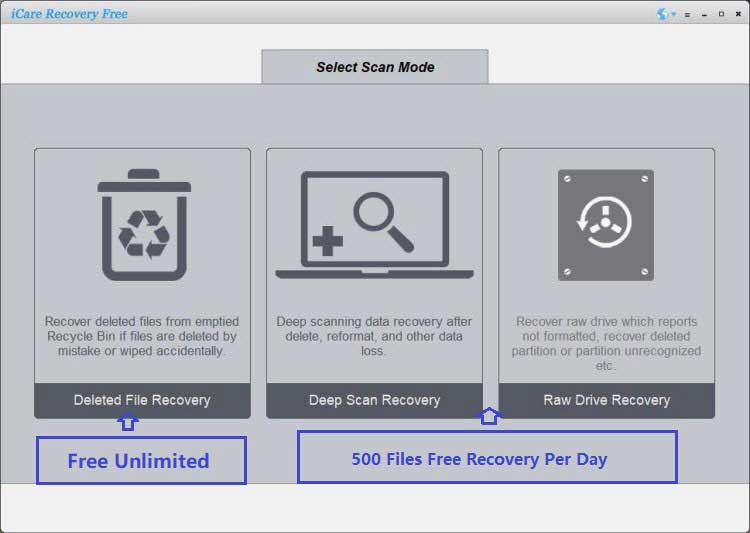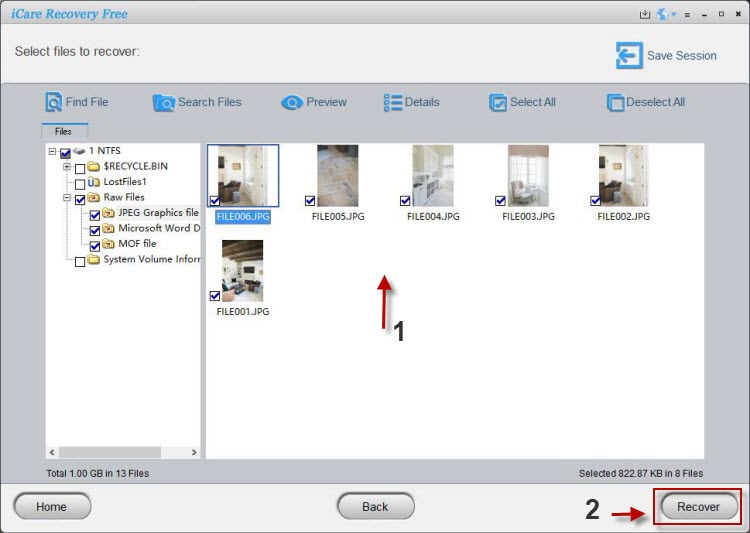SanDisk Micro SD Card RAW Format Fix Guide
SanDisk Micro SD card RAW format occurs when the card’s file system gets corrupted, making it unreadable by Windows or Android. To fix it, you can repair the file system using built-in tools (CHKDSK, Disk Management) or recover files first with iCare Recovery Free before reformatting. ✅
Why Does a SanDisk Micro SD Card Show RAW?
A RAW file system means the SD card is not recognized with FAT32/exFAT/NTFS. Common causes include:
- ⚡ Sudden power loss while writing data
- 💾 Unsafe removal from devices
- 🦠 Virus or malware infection
- 🔧 Physical damage or bad sectors
Also read: RAW SD card recovery or Sandisk sd card recovery
Step-by-Step Fixes for SanDisk Micro SD Card RAW File System
Below are detailed methods to fix a SanDisk micro SD card RAW format problem. Always try to recover your data first before attempting repair.
1. Recover Data with iCare Recovery
Before running repairs, protect your data:
 Download and install iCare Recovery.
Download and install iCare Recovery.- Launch the program and select your RAW SanDisk micro SD card.

- Run a deep scan to detect lost files (photos, videos, documents, etc.).
- Preview and recover files to a safe location (not back to the SD card).

🔑 This ensures your data is safe even if repair requires formatting.
2. Run CHKDSK Command
Windows includes a tool called CHKDSK that can fix minor corruption:
- Insert your SanDisk micro SD card into a card reader.
- Open Command Prompt as Administrator.
- Type:
chkdsk X: /f(replaceXwith your SD card drive letter). - Press Enter and let Windows scan and attempt repairs.
⚠️ Note: Sometimes CHKDSK cannot process RAW drives. If it fails, proceed to reformatting.
3. Use Windows Disk Management to Reformat
If CHKDSK fails, you may need to reformat the SD card:
- Right-click This PC → Manage → Disk Management.
- Locate your RAW SanDisk micro SD card (listed as “RAW”).
- Right-click and select Format.
- Choose FAT32 (for ≤32GB cards) or exFAT (for larger cards).
- Click OK to complete formatting.
✅ After formatting, the card will be usable again (but data will be lost unless recovered first).
4. Try Diskpart Clean and Recreate Partition
If Disk Management does not work, you can use Diskpart (advanced users only):
- Open Command Prompt as Administrator.
- Type
diskpartand press Enter. - Type
list diskto see all drives. - Type
select disk X(replace X with your SD card number). - Type
clean(⚠️ erases everything). - Type
create partition primary. - Format the partition as
format fs=fat32 quickorformat fs=exfat quick.
5. Replace the Card if Physically Damaged
If none of the above works and the card repeatedly turns RAW, it likely has physical damage or bad sectors. In this case:
- 💡 Replace the card with a new SanDisk micro SD.
- 📦 Claim warranty if available (SanDisk often provides replacements).
Important Considerations
- Data Loss: Formatting a RAW microSD card will erase all data on it. Always recover data first with iCare Recovery Free if needed.
- Physical Damage: If the card is physically damaged or if the card reader is faulty, the RAW format issue might persist even after software fixes.
Quick Fix Comparison Table
| Method | Risk | Success Rate | Recommended For |
|---|---|---|---|
| iCare Recovery | None (read-only scan) | ⭐️⭐️⭐️⭐️⭐️ | Recovering files before any repair |
| CHKDSK | Low (no guaranteed recovery) | ⭐️⭐️⭐️ | Fixing minor corruption issues |
| Disk Management Format | High (erases all data) | ⭐️⭐️⭐️⭐️ | Restoring usability after recovery |
| Diskpart Clean + Recreate | Very High (full data wipe) | ⭐️⭐️⭐️⭐️ | Advanced users fixing stubborn errors |
| Replace Card | Cost of new card | ⭐️⭐️⭐️⭐️⭐️ | Physically damaged or warranty-covered cards |
Introducing iCare Recovery
iCare Recovery is a trusted data recovery tool that allows you to recover photos, videos, documents, and more from RAW formatted micro SD cards. Key benefits:
- ✔ 100% Free recovery software
- ✔ Supports SanDisk micro SD, SDHC, SDXC
- ✔ Easy-to-use interface for beginners
- ✔ Works on RAW, corrupted, or unrecognized drives
How to Prevent SanDisk Micro SD Card RAW Format Issues
Fixing a RAW microSD card can be stressful, but prevention is always better than repair. Here are some expert tips to keep your SanDisk micro SD card healthy and reduce the risk of RAW errors:
- 📌 Always eject safely: Use the “Safely Remove Hardware” option on Windows or unmount the card on Android before removing it.
- 🔋 Avoid sudden power loss: Don’t remove the card while files are transferring or when the device battery is critically low.
- 🛡️ Protect against malware: Scan the SD card regularly with antivirus software to prevent file system corruption.
- 💾 Backup regularly: Keep copies of important files on your PC or cloud storage to avoid permanent loss.
- 🌡️ Avoid extreme conditions: SanDisk cards are durable, but exposure to heat, water, or static can cause irreversible damage.
- 🖥️ Use quality card readers: Faulty or cheap readers often cause repeated RAW format issues.
By following these preventive measures, you can extend the lifespan of your SanDisk micro SD card and reduce the chances of encountering the dreaded RAW file system error. ✅
SanDisk Micro SD Card RAW Troubleshooting Checklist
Whenever you have a raw Sandisk memory card, follow this simple checklist to quickly identify and fix your SanDisk micro SD card RAW issues without losing data:
Note: There are chances that a raw Sandisk Micro SD card may be corrupted phsyically and cannot be fixed in neither ways.
- 💡 Check Card Recognition: Insert the card into another device or computer.
- If recognized → Minor issue, try CHKDSK or repair tools.
- If still RAW → Proceed to recovery steps.
- 💾 Recover Your Data: Use iCare Recovery to save all important files before any repair or formatting.
- 🛠️ Run CHKDSK: Open Command Prompt →
chkdsk X: /f(replace X with drive letter).- If CHKDSK succeeds → Test the card.
- If it fails → Reformat or use Diskpart.
- 📂 Reformat Using Disk Management: Choose FAT32/exFAT depending on card size.
- Remember: Formatting erases all data. Ensure recovery is complete.
- ⚡ Advanced Repair with Diskpart: Only for stubborn RAW issues.
- Use
clean→create partition primary→format fs=fat32/exfat quick.
- Use
- 🔄 Test Card: Insert it into a device to check functionality.
- If it works → Issue fixed.
- If not → Likely physical damage, consider replacement.
- 📦 Replace if Physically Damaged: Persistent RAW issues often indicate bad sectors. Replace with a new SanDisk micro SD card and maintain backups.
✅ By following this checklist, you can quickly diagnose whether your card can be repaired or needs replacement, saving time and preventing data loss.
FAQ: SanDisk Micro SD Card RAW Format
1. Can I recover files from a RAW SanDisk micro SD card?
Yes. Use iCare Recovery Free to recover files before attempting a fix.
2. Will formatting fix the RAW error?
Formatting can fix the RAW file system, but it will erase all data unless recovered first.
3. Why does my SanDisk micro SD card keep becoming RAW?
Repeated RAW issues usually mean the card has bad sectors or is physically damaged. Replacement may be necessary.
4. Is there a free solution to repair RAW SD cards?
Yes, you can try CHKDSK or iCare Recovery Free before reformatting.
Related Articles
